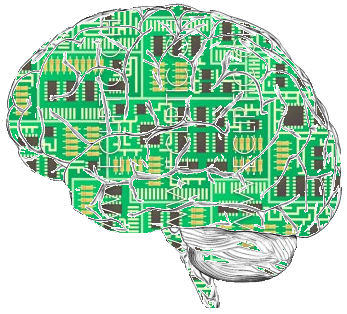This post is also available in Dutch.
We’ve never been more optimistic about neuroscience. In 2013 the European Commission invested a billion euros in the ‘Human Brain Project.’ Its ambitious goal: to develop a computer simulation of the entire human brain within the next ten years. What’s the state of affairs today?
Modern medicine has made incredible progress over the past few centuries. However, many psychiatric and neurological conditions still have doctors at a loss. Some scientists believe that we could tackle these issues by simulating the human brain with a so-called ‘super computer’.
A prominent advocate of this idea is the South-African neuroscientist Henry Markram. In 2005 he initiated the Blue Brain Project, setting out to build the brain of a rat inside a super computer. The project involved meticulously measuring the electrical activity generated by rat neurons and then using the measured data to build computer simulations of small networks of brain cells. The resulting simulations contained one million neurons with a stunning one billion connections!
Visual depiction of a small neural network model based on a young rat
The Human Brain Project
The Blue Brain Project’s accomplishments helped Markram convince political decision makers to invest in the expansion of his mission. Inspired by the Human Genome Project, which succeeded in mapping the entire human genome, a similar project was set up for the brain: the Human Brain Project.
The project quickly became controversial. Critics argued that it demonstrated the mismanagement and waste of resources in science, as well as misguided priorities in the allocation of research funding.
Scientists have also pointed out a more fundamental problem. The basic building blocks of the Human Brain Project are individual neurons. By combining more and more neurons and circuits (micro level) the aim is to develop a simulation of the entire brain (macro level). This approach ignores an important law of nature: the whole is greater than the sum of its parts. Just as studying drops of water won’t lead to an understanding of ocean waves, simulating individual cells won’t lead to real insights into the brain. What we need is an understanding of the overarching brain architecture, and this has not yet been achieved.
 Building a brain ‘in silico:’ still a pipe dream? Picture by Gengiskanhg (CC-BY-SA).
Building a brain ‘in silico:’ still a pipe dream? Picture by Gengiskanhg (CC-BY-SA).
Wrong focus?
What this all means is that we need new conceptual models that describe the behavior of the entire brain with its tens of billions of cells. Such models can be improved using experiments, but the Human Brain Project focused very little on experimental research. In fact, they severely downsized this component of the project, for example cutting all research on primates.
The lack of experiments studying real, working brains in the Human Brain Project lead to severe criticism and an open letter signed by over one hundred prominent neuroscientists. Subsequently, a conciliation committee was set up to help the project out of its impasse. Its advice: new leadership and course corrections to increase the focus on experimental research.
The first piece of advice has already been implemented. In addition, it has been announced that the project’s focus will return to cognitive neuroscience. Let’s hope this will put the human Brain Project on the right track. A simulation of the human brain is still a long way off, but combining research at all levels can help us reach a more complete understanding of the brain. With that, we may also be able to find more effective treatments of neuropsychiatric disorders such as Alzheimer’s, depression and autism.
This blog was written by our regular guest blogger Ruud Berkers.
Edited by Jeroen.
